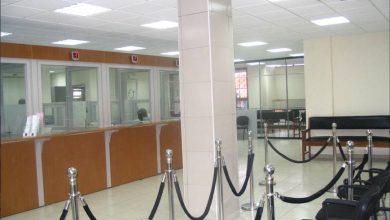Financial inclusion powered by mobile money
Financial inclusion has become a popular catchword in recent years. From central banks and financial institutions-the conventional commercial banks, insurance companies and micro-finance groups-to international multilateral organisations, they are all talking about it.
Employing various strategies, the mostly formal institutions seek to ensure that as many people as possible have access to financial services.
In Malawi, if statistics are anything to go by, the formal financial institutions, most notably the banks and insurance firms, are yet to make a breakthrough to bring on board as many people as possible.
For instance, out of a population of about 17 million, insurance penetration remains low at a miserable three out of every 100 while only about 20 in every 100 people have bank accounts.
During the 10th Bankers Dinner for the Institute of Bankers (IoB) held under a befitting theme of Financial Sector Synergies: A Catalyst for Financial Inclusion, Bankers Association of Malawi (BAM) president Paul Guta-who is the managing director for Nedbank Malawi—lamented that the total number of bank accounts was at about two million as at June 2018.
When you consider the fact that the two million bank accounts include the multi-banked—individuals who hold accounts in more than one bank or with more than one account with the same bank—the situation is not good. It reflects very low penetration rates or poor financial inclusion.
Financial inclusion’s key objective is to improve the range, quality and availability of financial services and products to the unbanked, under-served and financially-excluded sections of society.
In his address during the same Bankers Dinner, IoB chairperson Eric Ouattara, who is also the managing director for FDH Bank, made a candid observation about financial inclusion: “Financial Inclusion embraces certain key principles which we consider critical for delivering a broad range of quality financial services and products to the most vulnerable in our society who comprise both the unbanked and the under-banked.”
There is no one way of achieving financial inclusion. It requires multiple platforms and efforts, including mobile money which, in my view, has proven to be more inclusive by the day.
It is a fact that mobile money is the in-thing. It is the future of banking. Many of us have seen how TNM Mpamba and Airtel Money have grown over the years and simplified money transfers and payments.
Briefly, mobile money entails a wallet on the mobile phone that enables one to send and receive money, pay bills and, in the case of TNM Mpamba, invest in the money market through Mpamba Fesa with as little as K1 000 in a partnership with Old Mutual Unit Trust.
How does mobile money work? It is represented through electronic value of money in mobile phones bought by agents or providers and sold to subscribers. This electronic value is backed by physical cash in line with Reserve Bank of Malawi (RBM) requirements such that today, TNM Mpamba and Airtel Money, collectively, have at least K15 billion in deposits in banks at any given time. The funds are currently kept using the Trust Laws.
Basically, mobile money offers electronic financial services solutions that leave a paper trail in the system. There are records regarding who deposited or transferred what amount, when and to whom. Perhaps, with strong political will, mobile money can also help curb the massive fraud if used to pay allowances and wages in the public sector.
Whereas the formal banking sector has two million bank accounts, mobile money collectively boasts of at least 4.6 million subscribers on TNM Mpamba, Airtel Money and Zoona.
TNM Mpamba and Airtel Money have about 12 000 agents while the nine commercial banks collectively have a network of 400 automated teller machines (ATMs) nationwide. Now you see why I put it that mobile money is the catalyst for financial inclusion.
Worth commending are the synergies between commercial banks and mobile money operators which enable account holders to link their various bank accounts with mobile money accounts. Under the arrangement, one can transfer money from bank to mobile and cash from an agent or vice-versa and cash from an ATM. What more convenience would you ask for!
I look forward to the day the interoperability switch between Airtel Money and TNM Mpamba will be switched to facilitate inter-network money transfers. I also look forward to the day money in the mobile money wallet will start earning interest in the same manner savings accounts in banks do.
Merchants should also embrace mobile money payments in the same way they do with point of sale (PoS) devices using commercial bank ATM cards. In Kenya, for example, people are able to pay for public transport and purchases in markets using mobile money platforms.
Mobile money, like the informal financial empowerment movement commonly known as the ‘village bank’-loose groupings of like-minded persons who mobilise savings and lend each other at agreed terms and conditions or banks of the people, for the people and by the people-has redefined financial inclusion and is here to stay!



